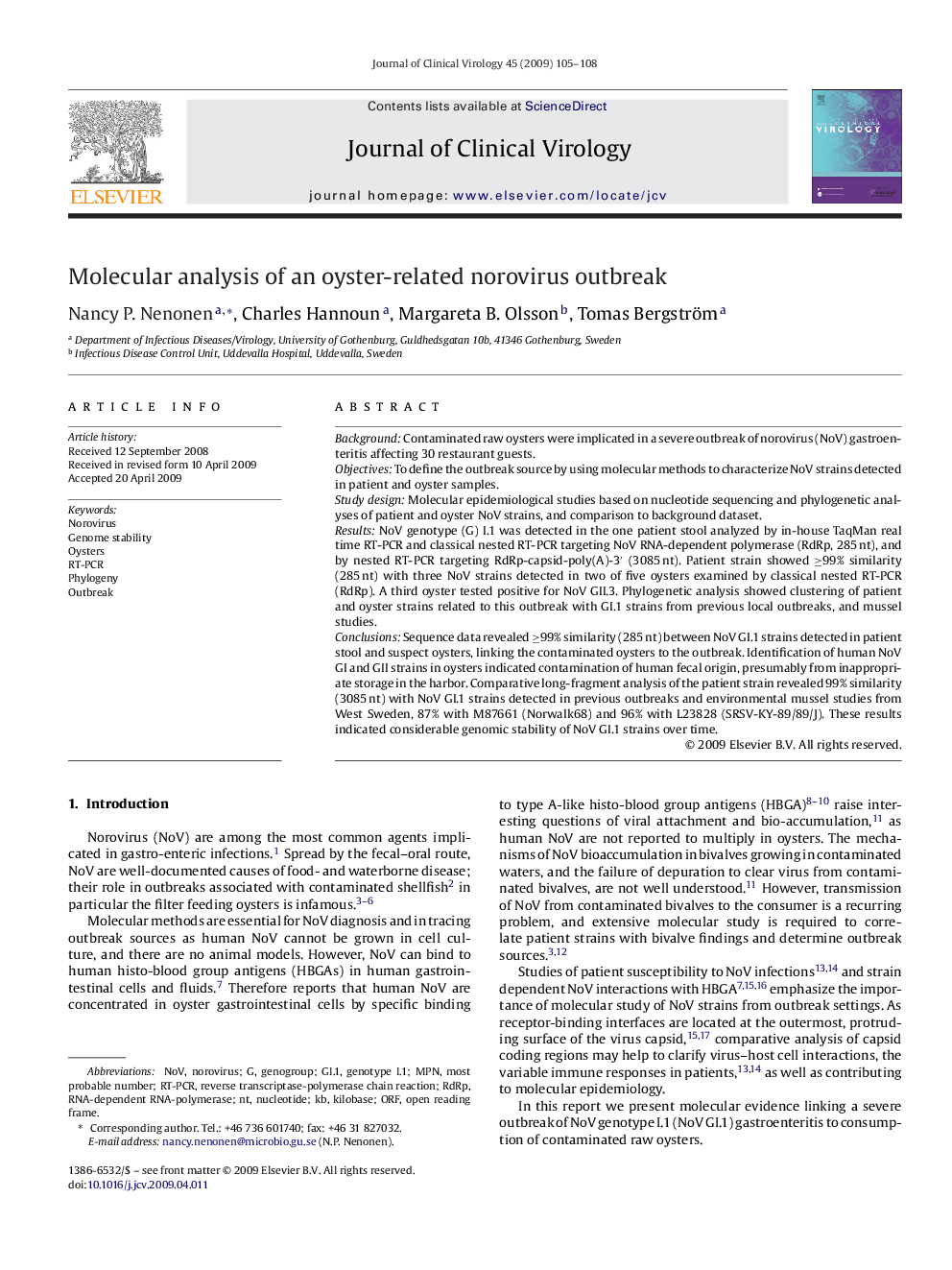| Article ID | Journal | Published Year | Pages | File Type |
|---|---|---|---|---|
| 3369777 | Journal of Clinical Virology | 2009 | 4 Pages |
BackgroundContaminated raw oysters were implicated in a severe outbreak of norovirus (NoV) gastroenteritis affecting 30 restaurant guests.ObjectivesTo define the outbreak source by using molecular methods to characterize NoV strains detected in patient and oyster samples.Study designMolecular epidemiological studies based on nucleotide sequencing and phylogenetic analyses of patient and oyster NoV strains, and comparison to background dataset.ResultsNoV genotype (G) I.1 was detected in the one patient stool analyzed by in-house TaqMan real time RT-PCR and classical nested RT-PCR targeting NoV RNA-dependent polymerase (RdRp, 285 nt), and by nested RT-PCR targeting RdRp-capsid-poly(A)-3′ (3085 nt). Patient strain showed ≥99% similarity (285 nt) with three NoV strains detected in two of five oysters examined by classical nested RT-PCR (RdRp). A third oyster tested positive for NoV GII.3. Phylogenetic analysis showed clustering of patient and oyster strains related to this outbreak with GI.1 strains from previous local outbreaks, and mussel studies.ConclusionsSequence data revealed ≥99% similarity (285 nt) between NoV GI.1 strains detected in patient stool and suspect oysters, linking the contaminated oysters to the outbreak. Identification of human NoV GI and GII strains in oysters indicated contamination of human fecal origin, presumably from inappropriate storage in the harbor. Comparative long-fragment analysis of the patient strain revealed 99% similarity (3085 nt) with NoV GI.1 strains detected in previous outbreaks and environmental mussel studies from West Sweden, 87% with M87661 (Norwalk68) and 96% with L23828 (SRSV-KY-89/89/J). These results indicated considerable genomic stability of NoV GI.1 strains over time.
